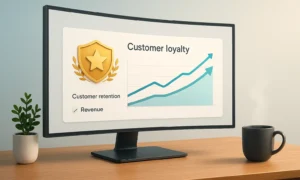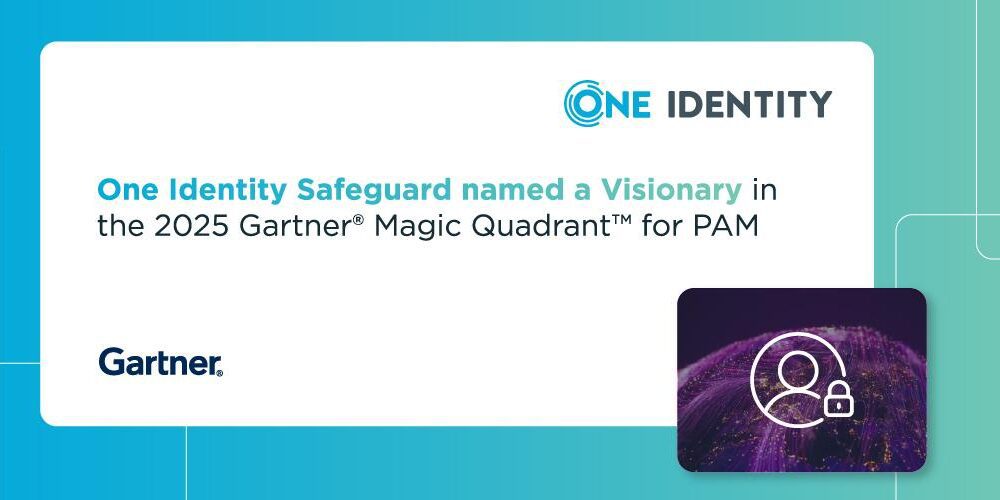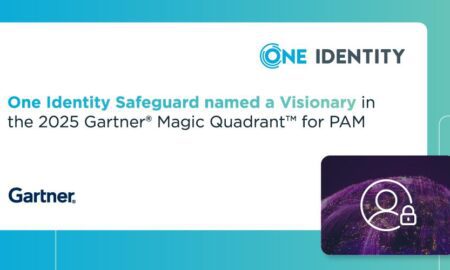20 Customer Retention Lessons of Turning Dissatisfaction into Loyalty
Customer retention is a critical aspect of business success, and turning dissatisfaction into loyalty can be a game-changer. This article presents valuable lessons drawn from expert experiences across various industries. By implementing these strategies, businesses can transform unhappy customers into loyal advocates, fostering long-term relationships and sustainable growth.
- Take Responsibility and Follow Through
- Empathize and Exceed Expectations
- Address Root Causes Not Surface Issues
- Turn Unhappiness into Trust Building Opportunities
- Prioritize Clear Communication and Accountability
- Listen Actively and Adapt to Patient Needs
- Transform Attitudes Through Personal Engagement
- Collaborate with Customers to Improve Services
- Build Long-Term Relationships Through Active Understanding
- Treat Negative Reviews as Growth Opportunities
- Use Humor and Sincerity to Diffuse Frustration
- Implement User Feedback to Foster Loyalty
- Surprise Customers with Unexpected Extra Service
- Address Stress Points Before Defending Results
- Explain Business Decisions Transparently to Users
- Exceed Expectations with Personal Problem-Solving Approach
- Empower Clients Through Clear Communication
- Show Empathy and Build Trust in Healthcare
- Transform Complaints into System Improvement Opportunities
- Value Silent Feedback to Enhance Customer Retention
Take Responsibility and Follow Through
A few years back, we had a kitchen remodel that didn’t start off great. There were delays with a countertop supplier, and we had some miscommunication about the cabinet finish. The client was pretty upset. At one point, she even said she regretted hiring us. I didn’t try to sugarcoat it. I called her myself, explained what went wrong, and more importantly, laid out exactly how we were going to make it right. We gave her a dedicated point of contact, daily updates, and got the job done ahead of the revised schedule. A year later, she came back to us for her guest bathroom remodel. What that taught me is people don’t expect things to be perfect. They just want to know you’ll take responsibility and follow through when things get tough.
Kiel Kellow, Business Owner, Kellow Construction
Empathize and Exceed Expectations
We once had a client who was extremely dissatisfied with an $8,000 smart lighting system due to a software malfunction, which caused the lights to flicker for 30 minutes every day. I personally went to meet them and spent two hours listening to understand their frustrations rather than simply solving the bug. I also discovered that the flickering was a symptom; the root of the matter was that they had lost confidence in the smart home technology and felt they were not being heard.
Once my lead technician figured out the flicker in 45 minutes, we provided a free, custom optimization of their entire smart home system, streamlined their app, and designed lighting scenes that were unique to them. We also gave them a direct mobile phone number for our lead smart home specialist in case they had any further questions and assured them that they would receive special attention for the next year. In just three months, this client, who initially considered asking to have the full system removed, turned into a great advocate, recommending us to two neighbors who spent more than $10,000 each on smart home systems, and even contracted us for another $3,000 project on smart security camera installation.
The most important lesson this experience has taught me about customer retention is that true loyalty is only possible when based on active empathy and devotion to the ultimate success and peace of mind of the client. Deeper emotional reactions, such as feeling unheard or frustrated by complexity, are usually the source of the problem. Although a simple repair is needed, it does not always reshape that emotional connection.
Deep listening as a method of customer retention involves listening to uncover hidden fears, anticipating future issues, and providing solutions that address more than just the stated complaint. Spending an additional two to three unbillable hours to understand a client’s real concerns and assist them, as we did, can lead to tens of thousands of dollars in future business and priceless word-of-mouth referrals. It’s about shifting from a transactional approach to one that focuses on creating long-term partnerships through trust and mutual prosperity, where the client feels unique and cared for.
Alex Smith, Manager & Co-owner, Render 3D Quick
Address Root Causes Not Surface Issues
Customers can sometimes get frustrated because they believe they ‘need’ tools, workflows, or features just because they’ve been hearing everyone talking about how useful they are. We once had a customer who was ready to cancel their subscription and move to a new tool they had been hearing everyone raving about. Instead of convincing them to stay based on what we could offer, or even offering to add that ‘feature’ for them, we took the time to talk to the customer and ask them why they thought it mattered. We then used their own data and insights to show them a report displaying their very own results and usage, indicating that they had no ‘need’ for that feature and were getting the results they were hoping for without it.
This helped them understand that the real problem wasn’t the missing feature, but the lack of visibility of how their team was using the product, leading to confusion. Our report not only helped them get the clarity they needed but also built trust that we wanted their best interest and knew what they needed instead of just saying yes and building something they didn’t even need.
Marlon Misra, Cofounder/CEO, Copilot
Turn Unhappiness into Trust Building Opportunities
We once had a customer who wasn’t happy with how their Shopify store’s initial design was implemented. After our initial revision, they were irritated because they thought it didn’t align with their brand voice. To make sure we were in agreement, we offered a same-week redesign sprint with daily check-ins, asked targeted follow-up questions, and listened intently rather than becoming defensive.
They signed up for a longer-term maintenance and marketing support package at the end of the process because they were so happy with the outcome. Since then, they have recommended us to three more clients.
The lesson? Being unhappy isn’t always a bad thing; it can also be a chance to gain someone’s trust. Quick, proactive communication and showing you’re willing to invest in fixing the issue can turn a one-time project into a long-term relationship. Customer retention isn’t about perfection – it’s about partnership.
Oleh Stupak, CEO & Co-Founder, Mgroup Shopify Agency
Prioritize Clear Communication and Accountability
There’s one time when one of our clinic partners was not happy with the onboarding process for one of our services. They felt that the communication was not clear, and the setup took longer than the expected time. But what I did instead of defending the situation was that I scheduled a call, listened to their concerns, and admitted that we were wrong. Then we talked about the changes we can make to make things better and to make sure the same mistake will not happen again. We changed the way we will guide new clients or customers, we added more check-ins, and gave them a direct point of contact. After a few weeks, the tone had completely changed, and now they’re one of our most loyal clients. They even referred other clients to us after the changes we made.
Because of that, I’ve learned how to respond to the main matter more than the mistake itself. People appreciate honesty, effort, and, of course, how we approach them. When you’re ready to listen, accept where it went wrong, and fix the issue right away, that will be the best way to build trust between you and the client. Especially in healthcare and business, where the stakes are higher, trust is very important. It is the main foundation of a great partnership. So if you want to keep a long-term customer, make sure to make them feel valued and appreciated. Listen to their wants and needs, and make sure to always focus even on small things like follow-ups and clear updates.
Blaz Korosec, CEO, Medical Director Co.
Listen Actively and Adapt to Patient Needs
A customer transporting a high-value sports car to Dubai almost switched providers due to a frustrating delay caused by unexpected port congestion. They voiced concerns about potentially switching providers. I acted immediately; I addressed their concerns and acknowledged the inconvenience. While the delay was out of our direct control, I ensured that I explained the situation, took full accountability by prioritizing their shipment, and provided them with real-time tracking so they felt informed at every decision point. Additionally, I went above and beyond by offering them a goodwill discount on their next shipment and followed up until the car was delivered safely.
This reinforced for me that transparency, proactiveness, and ownership—particularly when problems are beyond our control—bolster customer retention. Customers appreciate genuine communication and accountability after the initial emotional response to a situation subsides.
Joe Giranda, Director of Sales & Marketing, CFR Classic
Transform Attitudes Through Personal Engagement
I had a case of a patient who was not satisfied with the color of her veneers. Although the procedure was technically perfect, it did not meet her expectations. I approached her directly and spoke with her to understand what she wanted to see, rather than dismissing her concerns. Together, we came up with a way to modify the shade to fit her specifications. It was all about making her feel listened to and engaged in the process.
We achieved the desired result after a follow-up visit, and she was overwhelmed with the outcome. She has since recommended some friends to my practice. This experience further reinforced that patient loyalty is not about perfection from the beginning; it’s about being transparent, listening, and adapting. Patients remain loyal when they feel appreciated and their demands are given priority. It’s not just a lesson in customer retention during treatment, but a lesson that goes much deeper, developing trust and relationships.
Dr. Carolyn Kittell, Cosmetic and General Dentist | Business Owner, Smile Essentials Cosmetic Dentistry
Collaborate with Customers to Improve Services
Last year, we received a letter of complaint from one of our customers who was fed up with a problem concerning the sliding doors we had installed in their residence. The doors had a few technical issues, and they were not pleased with the time it was taking to get them fixed. They were angry because they had anticipated an excellent experience from start to finish, which I completely understood.
I went the extra mile to visit the site instead of merely dispatching a person to rectify the situation. I wanted to witness what had happened with my own eyes and to assure the customer that we would do everything possible to resolve the problem. As soon as I arrived, I explained the repair process to them, provided them with a time estimate, and even added a follow-up service free of charge to ensure that everything was working properly. I also offered them a free discount on their next service as a gesture of compensation for the inconvenience they had experienced.
The lesson I learned from this experience is that going above and beyond can actually transform a customer’s attitude. This customer has even referred a couple of friends to us, and since then, they have been a loyal customer. It has taught me that customer retention is all about making the customer feel that you truly care about their experience.
Gal Cohen, Business Development Leader & Field Area Manager, JDM Sliding Doors
Build Long-Term Relationships Through Active Understanding
There will always be negative feedback from some customers as their expectations and needs differ, but what we learned early on is that negative feedback can be very helpful. For example, when receiving negative feedback on our onboarding flow from an actual user, it helps us understand our weak spots and get feedback on how it can be improved for future users. So, instead of ignoring their feedback, responding to the negativity, or even fixing it in silence, we reach out to the customer and ask to get on a call to dive deeper into understanding the issue, what their proposed ideas to fix it would be, and come up with a collaboration option that works for them and would work for our future clients. By doing so, we not only handle the issue and make the user feel heard, respected, and valued, but we also gain proper user experience feedback that can prevent future issues from occurring.
Ari Bleemer, Co-founder & CEO, OneCrew
Treat Negative Reviews as Growth Opportunities
One of our clients was extremely dissatisfied with an $8,000 smart lighting system because one of its software features was causing the lights to flicker for 30 minutes per day. I did not go to their home only to correct the bug; I personally went there and spent two hours listening to their problems. I figured out that the flickering was a sign; the actual problem was their lost confidence and feeling unseen.
Once my lead technician addressed the flicker by fixing it in 45 minutes, we also provided them with a free, customized optimization appointment for their full system to make their app easier to use and create tailor-made lighting scenes. We also gave them a direct mobile number for our specialist as well as 12 months of extended support. This client, who initially thought of removal, within three months became such a strong advocate that they referred two neighbors to us, resulting in purchases of smart home systems totaling over $10,000 each. In the process, they also hired us for an additional $30,000 project involving smart security cameras.
The greatest lesson we learned about customer retention is that actual customer loyalty is established through active understanding and the desire to see the client achieve their ultimate success and peace of mind. The issue is usually rooted in emotional reactions such as not being heard or losing faith. Just a simple repair does not necessarily restore that connection. It involves interpreting silent fears and providing remedies beyond the registered complaint. Taking an additional 2-3 hours of unbillable time to get to know and address concerns can generate tens of thousands of dollars in future business and untold word-of-mouth referrals. It is also about developing a long-term relationship founded on trust and mutual success so that the client feels truly valuable and supported.
Adam Bushell, Director/Electrician, AB Electrical & Communications
Use Humor and Sincerity to Diffuse Frustration
Once we had a client who was ordering cleaning services from our providers but couldn’t get it in his location because providers were cancelling the order at the last minute. As a result, we received several negative reviews.
We investigated this situation, contacted the customer, and realized that we had an issue with our app. It wasn’t showing a specific region on the map correctly, so he couldn’t indicate the correct location of his property.
We fixed the bug, contacted the customer, and offered him a completely free cleaning service (the main service we provide) as compensation.
As a result, we turned a 1-star reviewer on Google and Trustpilot into a loyal customer. We solved a problem with the entire app and even gained more clients in that region of Malta!
My suggestion: always read bad reviews, investigate the cases, and try to understand where they come from. Treat them as an opportunity rather than a problem.
Aleksandrs Tuls, Co-Founder, Rozie
Implement User Feedback to Foster Loyalty
Oh, the time a client emailed us with the subject line: “NOT HAPPY.” (Always a great way to start your Monday.) An impending deadline had them on the verge of abandoning ship. Instead of answering in corporate-speak, I phoned them, owned the mistake, and added some humor to douse the flames—accompanied by a service credit to ensure they understood we were serious (in a good way).
To our complete surprise, they not only stayed but started bringing all of their friends our way. Lesson learned? Turning frustration into loyalty is all about being human. Don’t hide behind your inbox. Apologize, do it sincerely, and add some charm to it. It’s like customer service jiu-jitsu: take the momentum of their frustration and turn the whole story around.
Shaun Carse, Director, Trackershop
Surprise Customers with Unexpected Extra Service
Yes. A user once contacted me via email about one of our solutions to a puzzle. He said that although our answer was correct, it could be misinterpreted. The email contained a long explanation about why it was easy to misinterpret our answers.
This stood out because we don’t have member profiles on our site. When someone takes their time to write to us, it means a lot. I responded to his email, and on the next day, we edited all the contradictory puzzle answers on our page.
For a free website like ours, loyalty is different. We don’t have sales or repeated purchases to track. I learned that you don’t retain people by using expensive tools. It counts if you win their trust by considering and implementing their ideas. When your audience knows for a fact that you listen to them, they stick with you.
Jon Paul, Founder and CEO, Puzzle Voyage
Address Stress Points Before Defending Results
A client used to call us in a rage because a pressure washing session resulted in streaks on her driveway and spots on her siding. She had a neighborhood get-together that weekend, and we had made her house look even worse. I did not shift the responsibility of failure to weather conditions or equipment. Instead, I ordered another total redo by our best crew within 24 hours and added a free gutter cleaning without her prior knowledge. Upon arrival to check the work, she found the siding clean, driveway repaired, and an additional service she did not ask for.
This is what I never forgot–loyalty is not so often based upon doing everything the right way the first time. It is based on how you follow up after something goes wrong. Not only did she refer us to five of her neighbors that month, but she also prepaid for quarterly maintenance for the year. It is not crucial to solve the issue within a short time; the customer must be surprised by the attention that he/she did not request.
Belle Florendo, Marketing coordinator, My Accurate Home and Commercial Services
Explain Business Decisions Transparently to Users
One of our clients gave us a scathing online review because the update to our local listings temporarily lowered their visibility in the map pack. Rather than responding with automated support, we contacted them within an hour, went through what was different, and offered to roll back the update while we reconsidered the listing structure. They did not anticipate a phone call. That put the tone back in place.
In the following two weeks, we tested side-by-side copies of their listing data and demonstrated to them how the restructured one effectively attracted more qualified leads, although they were of lower volume but had higher conversion rates. Not only did they remain, but they also referred another two businesses. The message was obvious: Do not leap to the defense of the work. The stress point should be addressed first, even at the expense of temporarily putting results on hold. Human beings will never forget how you handled their frustrations rather than the result.
Wayne Lowry, Marketing coordinator, Local SEO Boost
Exceed Expectations with Personal Problem-Solving Approach
At Tutanota, we often face the issue that users are dissatisfied because Tutanota seemingly offers “less” than big tech providers like Gmail or Yahoo. For instance, in the free version, users of Tutanota Mail only get 1 GB of storage for free. I was faced with such criticism once on LinkedIn and took the time and effort to explain to the person that “free is not free” on the web, meaning in return for Gmail’s and Yahoo’s free services, these companies track you, collect your data, create a profile about you, and use your data to show targeted, personalized advertisements.
Tutanota Mail, on the other hand, is fully ad-free, privacy-first, and funded solely through subscriptions. Because of this, certain limits for free users must exist to protect our infrastructure and our business’s profitability. It’s the only way to make sure that we can offer one completely free email address to anyone in the world. So while the free version in Tutanota is limited, it is also the best free option you can get: an option that does not abuse your data. This was, in fact, convincing to the users who appreciated my explanation and agreed to upgrade to a paid plan – instead of complaining about the storage limits on the free version.
The lesson I learned from this is that user satisfaction is not only about the services and features you provide but also about how you explain why you must take certain business decisions. This learning has helped us to establish an open and transparent communication channel with our users, who in turn became more loyal.
Hanna Bozakov, Press officer, Tuta Mail
Empower Clients Through Clear Communication
A few months ago, one of our customers felt frustrated due to a series of problems they experienced with their hot water system. They were understandably angry, considering that this had disrupted their daily routine. I took the time to visit the property myself, to listen to them, and only then did I diagnose the problem in detail. It turned out to be a less complicated but overlooked component that had malfunctioned.
I not only solved the immediate issue but also spent more time explaining the problem and provided some prevention tips for the future. I also ensured that prompt repair was done, and they had hot water again within less than three hours. They appreciated the personal touch and our promptness.
The strategy of customer retention is supported by clear communication and an individualized approach. It is not sufficient to just fix the problem. Exceeding expectations builds trust and ensures that the client will return the next time there is an issue.
Caleb John, Director, Exceed Plumbing
Show Empathy and Build Trust in Healthcare
I had a client who sought me during one of the worst moments in their life, a tough divorce. Initially, they were completely strained and frustrated by the procedure. They were spending so much money, but they felt that the process was taking too long, and they couldn’t even see the light at the end of the tunnel. They were losing faith in the process, and their stress levels were increasing each time we met. It was also clear that they felt things were happening without their involvement, and I realized I had to turn that around.
I asked them to come and sit down face-to-face. We talked about the details of the case, the long-term plan, and the reasons why we made all the decisions. By the end of the day, I discovered that their nervousness began to melt away as I explained each step of the process to them. This empowered them, and they no longer felt helpless since they understood what we were doing and why. Here, I realized that sometimes the biggest difference in a case is not always made through the legal process, but by ensuring that clients feel heard and valued. I made an effort to listen and talk to them openly, earn their trust, and turn their frustration into appreciation. This experience taught me that clear communication, understanding, and honesty are necessary to transform a negative experience into a long-term relationship.
Emma Alves, Lawyer, Alves Law
Transform Complaints into System Improvement Opportunities
Once, a patient came very close to leaving the clinic after waiting for one hour. I did not hurry; instead, I listened to his frustrations. I gave him an explanation for the delay, apologized, and assured him that I would attend to his treatment myself. It was that brief discussion that revamped his whole visit. He remained there, and his loyalty increased over time. He became a frequent patient and had confidence in our care.
This scenario has taught me one of the most important things: as long as patients feel listened to and appreciated, they will be loyal to you. The anger in them may be redirected when you are empathetic and communicate clearly. It is not a matter of hurriedly going through the appointment or making excuses. It is all about reaching people, taking care of their issues, and proving to them that you are trustworthy. That is what makes a difference—that personal touch when a person is under stress.
Dr. Eleonora Fedonenko, Doctor of Medicine, Your Laser Skin Care
Value Silent Feedback to Enhance Customer Retention
One of our patients was angry because of waiting too long to have a refill request processed. She wrote a bad review and cancelled her membership. Rather than adhering strictly to our policies, we hand-wrote a note with a direct phone number to the care team lead that included an offer of a free follow-up consultation should she ever change her mind. Two weeks later, she re-enrolled. This happened more than a year ago, and she is still with us.
The real transformation occurred when we stopped viewing complaints as problems and instead saw them as challenges to our system. It wasn’t about refills—it was about silence. Human beings are more understanding than we imagine, provided they feel they are being listened to. The process of retention begins long before renewal. It begins by addressing the silent gaps in our response when something goes wrong.
Maegan Damugo, Marketing coordinator, Health Rising Direct Primary Care
Related Articles
- Building Customer Loyalty with Marketing Automation: Retention
- Effective strategies for eCommerce customer retention
- E-commerce loyalty program strategies for better customer retention



































